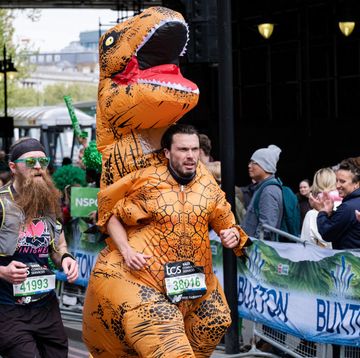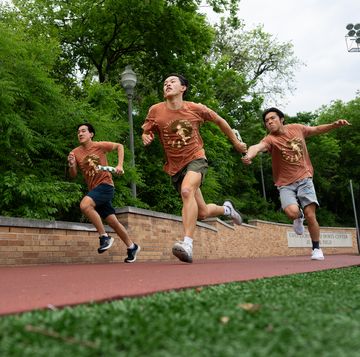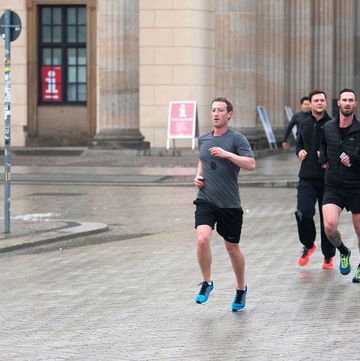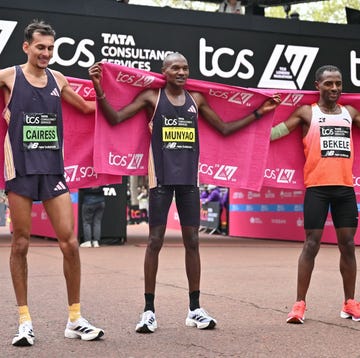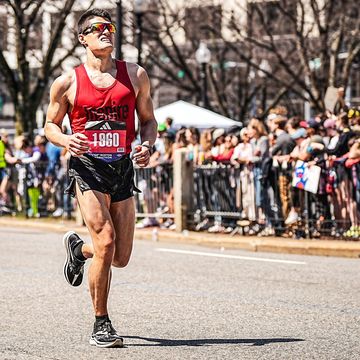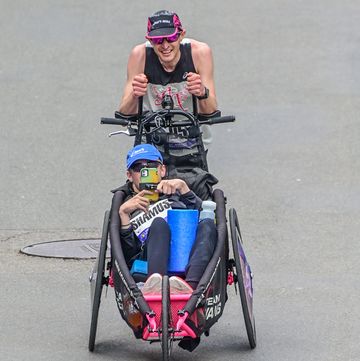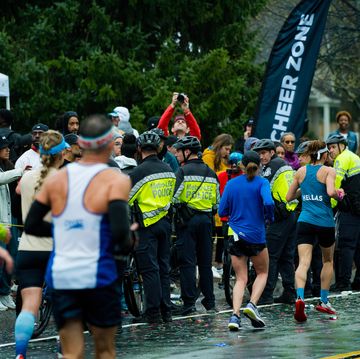Spectators rarely see the shoe trees at the LaVern Gibson cross-country course in Terre Haute, Indiana. But hundreds of high school and college runners who compete at the venue every fall know them well. The trees serve as a unique monument to completed cross-country seasons—and in some cases, to the end of running careers.
At the north end of the course, adjacent to the athlete staging area behind the starting line, stand the 40-foot sycamores festooned with several hundred worn out trainers and a few dozen pairs of cross-country spikes mixed in. From ground level, the shoes are anonymous, although many runners inscribe their shoes with names, dates, and messages before flinging them skyward.
Who tosses them up there? No doubt a few pairs belonged to junior varsity stragglers, who were glad to see a season end and the daily grind of training halted. But it’s likely the branches also hold shoes formerly worn by at least a few collegiate All-Americans—and athletes who are trying to achieve that status.
John McNichols, who since 1982 has been the head cross-country coach at Indiana State (mascot: the Sycamores), had a hand in designing the LaVern Gibson course before it opened in 1997. He first noticed old shoes hanging from a sycamore tree when cleaning up after the 2004 Indiana high school state meet and preparing the course for the 2004 NCAA championships.
“It’s in the area we have fenced off, where the teams set up their tents,” he said. “I saw the tree just on the outside of the course there, and I said to myself, ‘What in the world?’”
If Indiana high school runners started the tradition, college runners from all over the country have enthusiastically continued it, according to McNichols. “The high school state meet has been there every year since 2004, and the college kids started adding to the collection during our string of NCAA championships,” he said. (LaVern Gibson has hosted the NCAA Division I championships 12 times, in 2002, 2004–11, 2013, 2014, and 2016.)
The original shoe tree at LaVern Gibson is long gone. McNichols says that the accumulated weight of the hanging shoes is more than an immature sycamore can tolerate. “So we’ve gone through several [trees]; they’ve just fallen down,” he said. But the shoe-flinging continues with others in the grove.
A few years back, someone floated the idea of collecting the shoes in a permanent box positioned near the trees so the shoes could be donated to charity. But the suggestion hasn’t been put into effect.
“I just don’t think we’d get much cooperation from the kids on that,” McNichols said. “I think they’d continue throwing the shoes up in the trees, because that’s what makes it unique. Plus, most of the shoes are pretty well shot by the time they’re thrown up there.”
So the shoe-throwing practice at LaVern Gibson continues. “It’s a nice tradition,” McNichols said, “and unique to our course as far as I know. We have all kinds of runners coming here, so it’s neat to think of who has flung their shoes into those trees over the years.”




